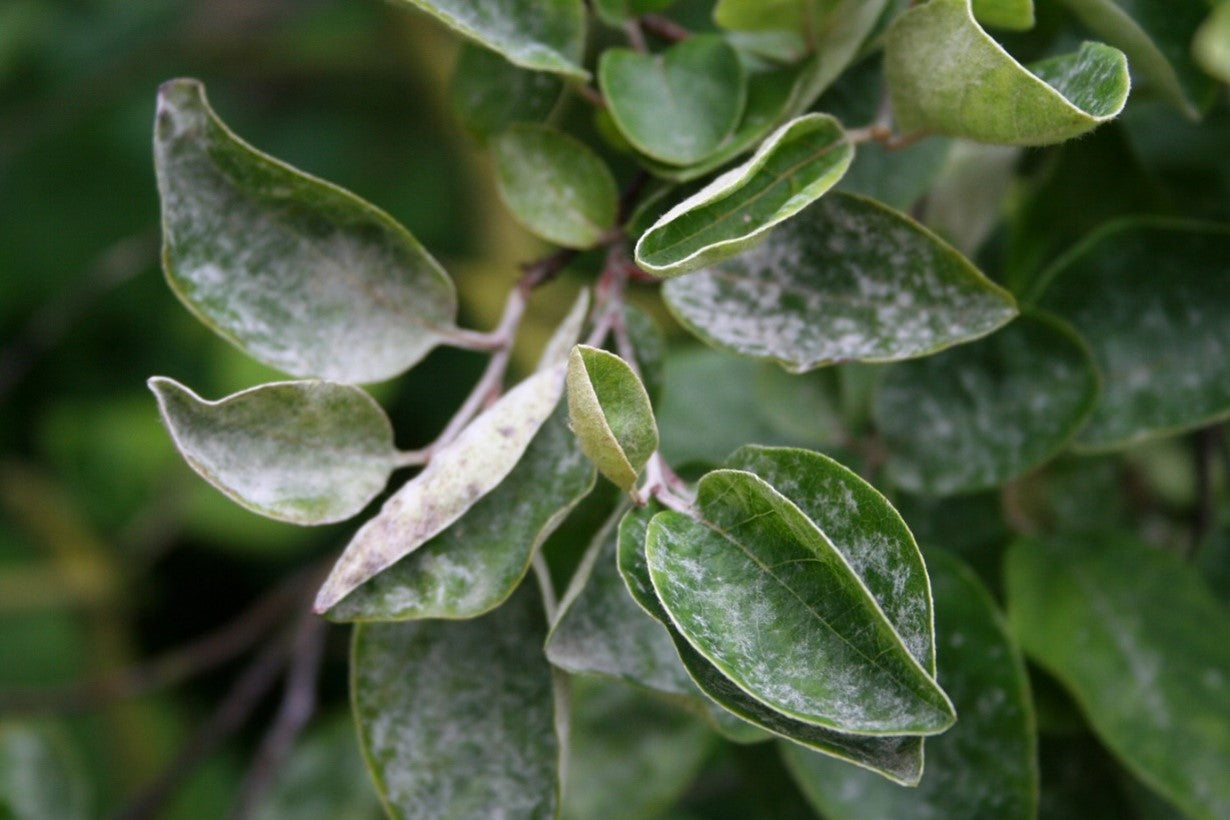Quince are one of our favourite fruits here at Terrace Fruits. Beloved by chefs and foodies alike and with a fantastic tree shape, they are right up there with the very best fruits to grow in the garden or on the terrace.
Quince are also one of the easiest patio fruits to grow and I urge gardening beginners to start their fruit growing experiences with a quince tree - they are self-fertile, fairly dwarfing in their growing habit and suffer very few pest problems. They can, however, be susceptible to the fungal disease, powdery mildew on the leaf, which can firstly be very unsightly, and secondly limit new growth and next years fruit bud development.
Now this mildew is not the same mildew that you get on the grout in between the tiles at the back of the bath taps. Nor is it the same as the mildew that is covering the canvas of the deck chair that you put away last September in the shed and have just brought out for sitting in the garden on the first warm day of the year! For a start, powdery mildew is powdery (and white as well, rather than black, like that grout!).
Powdery Mildew loves warm dry weather with a low humidity, so the summer months are when you must keep a sharp look-out. Once you see the tell-tale white powder in the growing tips then you must act.
Why are quince susceptible to mildew?
Quince leaves are relatively thin and delicate and do not have a thick layer of wax on them compared to pear, for instance. The leaf is also ridged and almost spoon-like, with the underside of the leaf covered in tiny hairs. These leaf characteristics all help to trap the fungal spores and encourage them to set up home on a quince leaf.
Powdery Mildew: How to spot the first signs of the disease
It soon becomes apparent that your quince has been attacked by powdery mildew as the leaf starts showing white blotches and these eventually join together, covering the whole leaf and turning the leaf a rusty brown colour. The leaf, after a while, will drop off with a bad infestation. New growth is severely restricted and flower buds stop forming. All in all, we can all do without powdery mildew!
What to do next – natural remedies to try
Fortunately, there are plenty of good spray chemicals available to the gardener as powdery mildew affects a large range of plants, not just Quince. But, many of us would rather not use chemical control methods and we are lucky as there are several non-chemical alternatives which have proven to control this problem.
All these somewhat out-of-the-ordinary methods do give control and I would tend to try them one after the other at weekly intervals so that the powdery mildew is subject to a range of ideas. Soon enough you will see fresh growth and healthy leaves.
Baking Powder - Sodium bicarbonate is effective if used at a very early stage of the infection. However, you will need to mix some liquid soap (definitely NOT detergent!!) with the mixture to help it spread across the leaf, rather than it run straight off it.
Instructions for use - Use 1 tablespoon of baking powder to 1 tablespoon of soap to 5ltrs water. Spray to run-off.
Cider Vinegar - The acid properties of cider vinegar are very good at controlling Powdery Mildew but be careful as too strong a mixture will burn the very young growth.
Instructions for use - Use 3 tablespoon of cider vinegar to 5ltrs water. Spray to run-off
Milk - I don’t think we know how this works, but it certainly does. It may well be bacteria activity within the milk attacking the fungal spores. You can use skimmed, semi-skimmed or full cream. Personally, I use Channel Island Gold Top and pour the other half of the bottle onto my corn flakes. Delissshhh!!
Instructions for use - Mix one part milk to 2 parts of water and spray over the tree at weekly intervals.
Tap Water - This is surprisingly effective as a control. Whilst Powdery Mildew loves damp and humid conditions, it hates very wet conditions, especially if the water dries very quickly.
Instructions for use - Use a good amount of water (invest in a misting nozzle for your hose or a watering can) in the morning when the sun is shining and hopefully, there will be a breeze too. You must spray under the leaf as well, as this is where the spores really latch onto the leaf.
Good Luck - let us know how you get on and what works for you!




